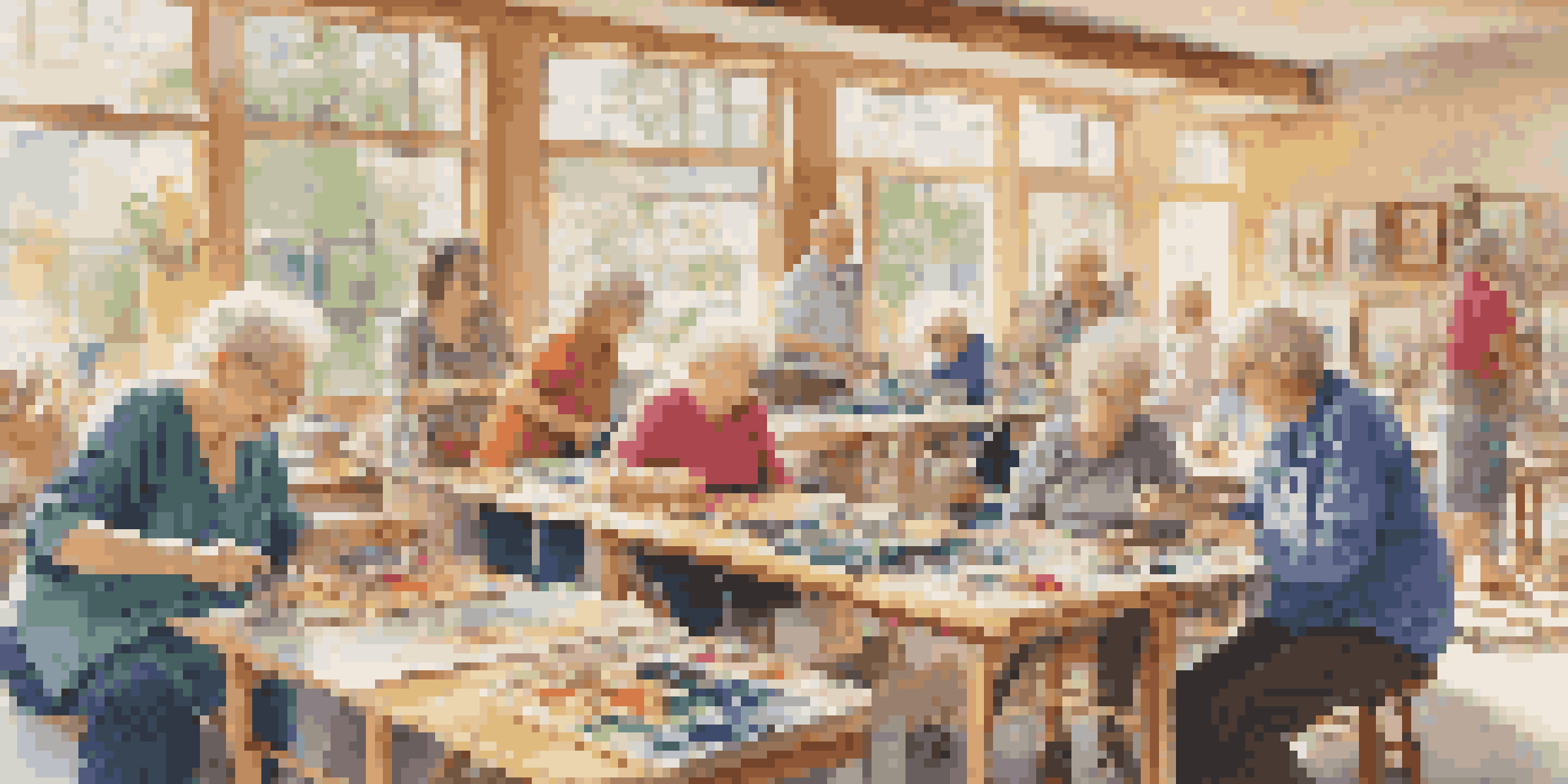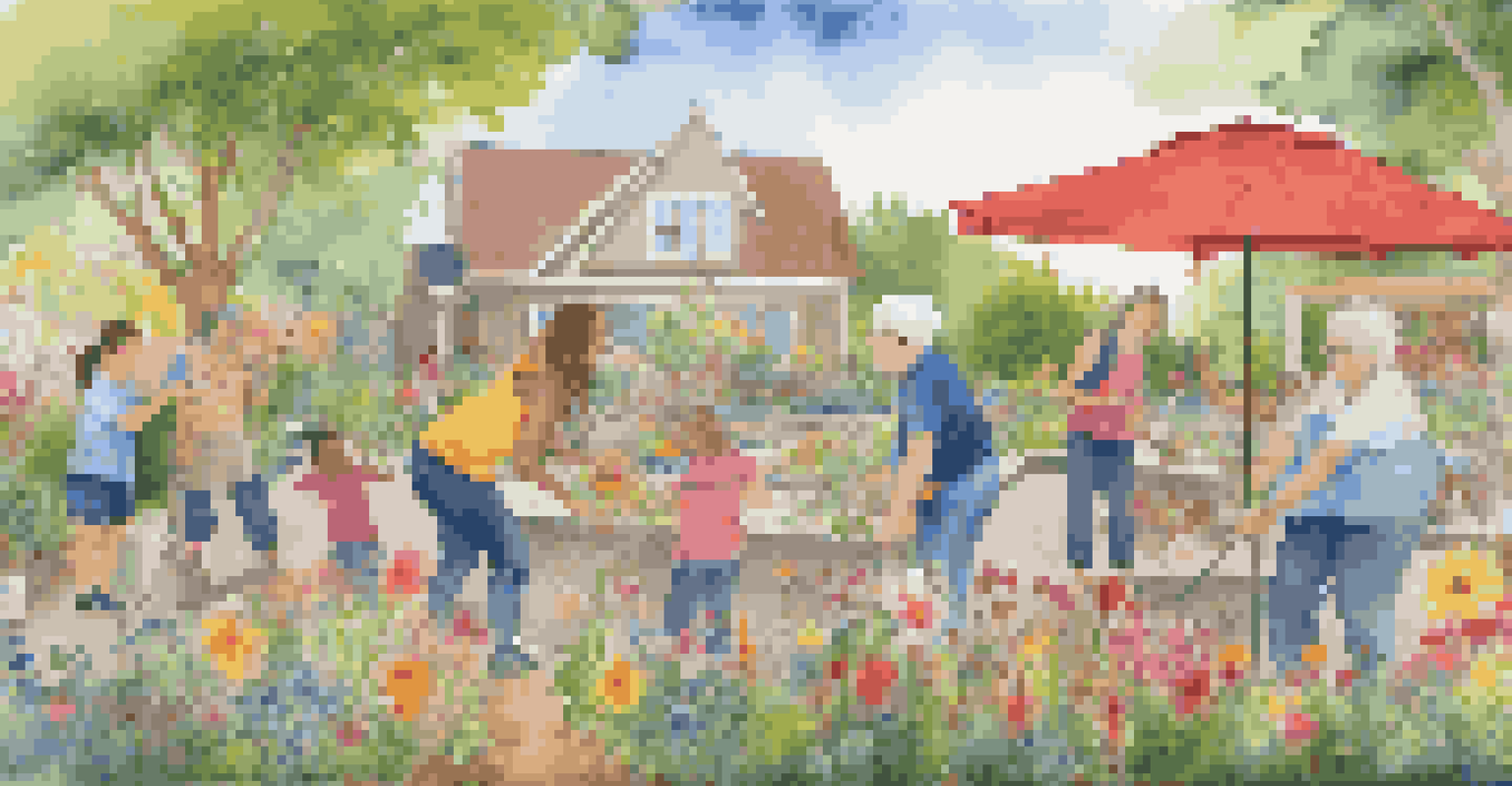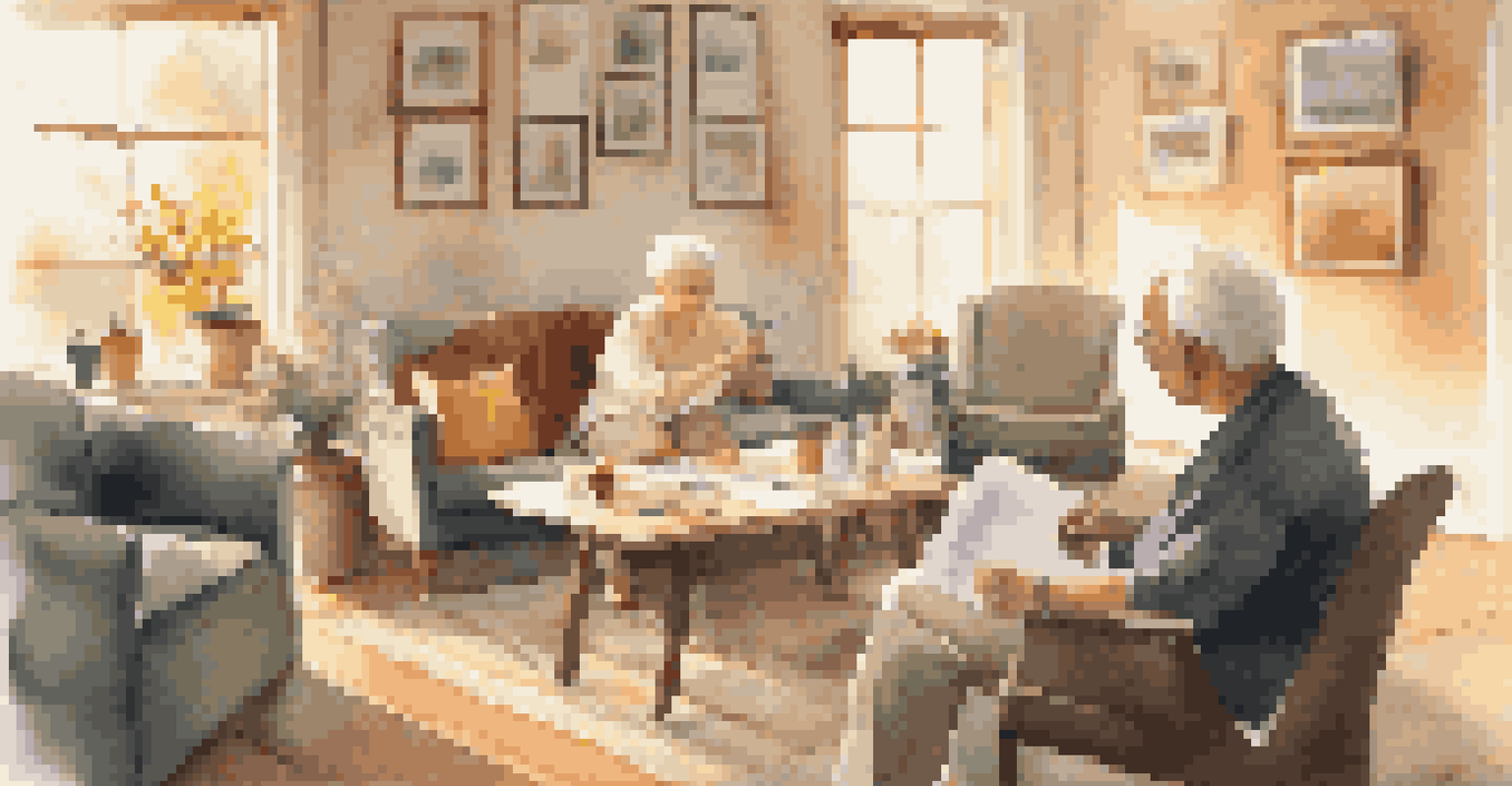Art and Aging: A Global Perspective on Creative Aging

Understanding Creative Aging and Its Importance
Creative aging refers to the concept of using artistic expression as a means for older adults to explore their emotions, share experiences, and engage with their communities. This practice is essential in fostering a sense of purpose and belonging, which can often diminish with age. Moreover, participating in creative activities can lead to improved mental health, as it encourages self-reflection and emotional release.
Creativity is not just for the young. It's an essential part of life at any age, allowing us to explore our emotions and connect with others.
As we age, we may face various challenges such as loneliness, physical limitations, or cognitive decline. However, engaging in creative pursuits can mitigate these issues by providing an outlet for expression and connection. For instance, painting, writing, or engaging in music can stimulate the mind and reduce feelings of isolation, ultimately enhancing quality of life.
Moreover, creative aging is not just about individual benefits; it also plays a vital role in community cohesion. When older adults come together to create, they share stories and wisdom, fostering intergenerational relationships that enrich the community as a whole. This interconnectedness is a powerful reminder of the value of creativity in nurturing both individuals and society.
Global Perspectives on Art and Aging
Different cultures around the world have their unique approaches to art and aging, revealing a rich tapestry of creativity. In Japan, for example, the concept of 'Ikigai' emphasizes finding joy and purpose in life, often through artistic endeavors. Older adults are encouraged to pursue activities that bring them fulfillment, such as calligraphy or traditional crafts, thereby enhancing their well-being.

In contrast, countries like Italy celebrate the elderly's contributions to society through cultural programs that promote art workshops and community exhibitions. These initiatives not only highlight the talents of older artists but also encourage younger generations to appreciate and learn from their experiences. This cultural exchange can inspire a sense of pride and accomplishment among seniors.
Creative Aging Enhances Well-Being
Engaging in artistic activities helps older adults explore emotions, build community connections, and improve mental health.
Furthermore, in many Indigenous cultures, storytelling and traditional arts serve as vital means of preserving history and wisdom. Elders often take on the role of educators, sharing their knowledge through art forms that resonate with their community's heritage. This practice not only reinforces cultural identity but also allows older adults to remain active participants in shaping their community's narrative.
Art Therapy: A Tool for Enhancing Well-being
Art therapy has emerged as a significant tool for promoting mental and emotional well-being among older adults. This therapeutic approach encourages individuals to express their feelings through various art forms, such as painting, sculpture, or collage. It can be especially beneficial for those dealing with grief, depression, or cognitive decline, providing a safe space for exploration and healing.
Art is the most beautiful of all lies; it is a way to express the truth of who we are, regardless of age.
Research has shown that art therapy can lead to reduced anxiety and improved mood, making it a powerful intervention for seniors. For instance, a study found that participants in art therapy programs reported lower levels of depression and increased feelings of self-worth. This underscores the potential of creative expression to foster resilience in the face of aging-related challenges.
Moreover, art therapy often emphasizes process over product, allowing individuals to focus on the act of creating rather than the end result. This shift in perspective can be liberating, as it encourages seniors to embrace their creativity without the pressure of perfection. Ultimately, art therapy can foster a deeper connection to oneself and promote overall well-being in the aging population.
The Role of Technology in Creative Aging
In today's digital age, technology plays a significant role in expanding opportunities for creative aging. Online platforms and tools have made it easier for older adults to access art classes, workshops, and communities, regardless of their physical location. This accessibility empowers seniors to explore their creative interests and connect with like-minded individuals worldwide.
For example, virtual painting classes or music lessons can provide a sense of routine and social interaction, crucial for maintaining mental health. Additionally, social media platforms allow older adults to showcase their artistic creations, fostering a sense of pride and accomplishment. This online visibility can lead to new friendships and collaborative projects, enriching their creative journey.
Art Therapy Promotes Emotional Healing
Art therapy provides a safe space for seniors to express their feelings, leading to reduced anxiety and enhanced self-worth.
However, it's essential to approach technology with sensitivity, as not all seniors may be comfortable or familiar with digital tools. Providing training and support can help bridge this gap, enabling older adults to harness the benefits of technology while engaging in creative pursuits. By doing so, we ensure that creative aging is inclusive and accessible for all.
Intergenerational Art Projects: Bridging the Gap
Intergenerational art projects are a wonderful way to foster connections between older and younger generations. These initiatives allow seniors to share their experiences, skills, and stories while collaborating on creative endeavors, such as murals, theater productions, or community gardens. The result is a rich exchange of ideas and perspectives that benefits both age groups.
Such projects not only promote understanding and respect between generations but also help to combat ageism by showcasing the talents and contributions of older adults. For instance, a community mural project can highlight the history and culture of a neighborhood, with seniors providing valuable insights and artistic direction. This collaboration creates a sense of ownership and pride for everyone involved.
Furthermore, intergenerational art projects can enhance social skills and emotional intelligence among younger participants. Learning from older adults about resilience, creativity, and storytelling can empower youth to develop a deeper appreciation for their elders. Ultimately, these collaborative efforts can cultivate a sense of community and belonging that transcends age barriers.
Art as a Means of Advocacy for Aging
Art has long been a powerful medium for advocacy, and in the context of aging, it can raise awareness about issues affecting seniors. Artists often use their creative platforms to address topics such as ageism, accessibility, and the importance of mental health in older adults. This form of expression can challenge stereotypes and promote a more inclusive society.
For instance, documentary films and visual art exhibitions can spotlight the experiences and challenges faced by older adults, prompting conversations around policy changes and community support. By sharing these narratives, artists can inspire empathy and action, encouraging society to prioritize the needs of the aging population.
Technology Expands Creative Opportunities
Digital tools facilitate access to art classes and communities, empowering older adults to connect and create regardless of location.
Moreover, art can serve as a catalyst for social change, empowering older adults to advocate for their rights. Whether through writing, performance, or visual arts, seniors can share their stories, influence public perception, and advocate for policies that enhance their quality of life. This form of engagement not only uplifts their voices but also fosters a sense of agency in the aging process.
Celebrating the Contributions of Older Artists
Recognizing and celebrating the contributions of older artists is crucial for fostering an inclusive artistic community. Many seniors possess a wealth of experience and creativity that can enrich the art world, yet their work often goes unrecognized. By highlighting their achievements, we can challenge societal perceptions and encourage a broader appreciation for the talent within the aging population.
Art exhibitions and competitions specifically focused on older artists can provide a platform for showcasing their work. Such initiatives not only validate their creativity but also inspire younger generations to learn from their experiences. This recognition can bolster the confidence of older artists, motivating them to continue creating and sharing their gifts.

In addition, celebrating older artists can help shift the narrative around aging, showcasing it as a time of growth and opportunity rather than decline. Through storytelling and mentorship, seniors can inspire others to embrace their creativity at any age. This celebration of artistic expression across the lifespan ultimately enriches the cultural landscape and underscores the value of all voices in the art community.